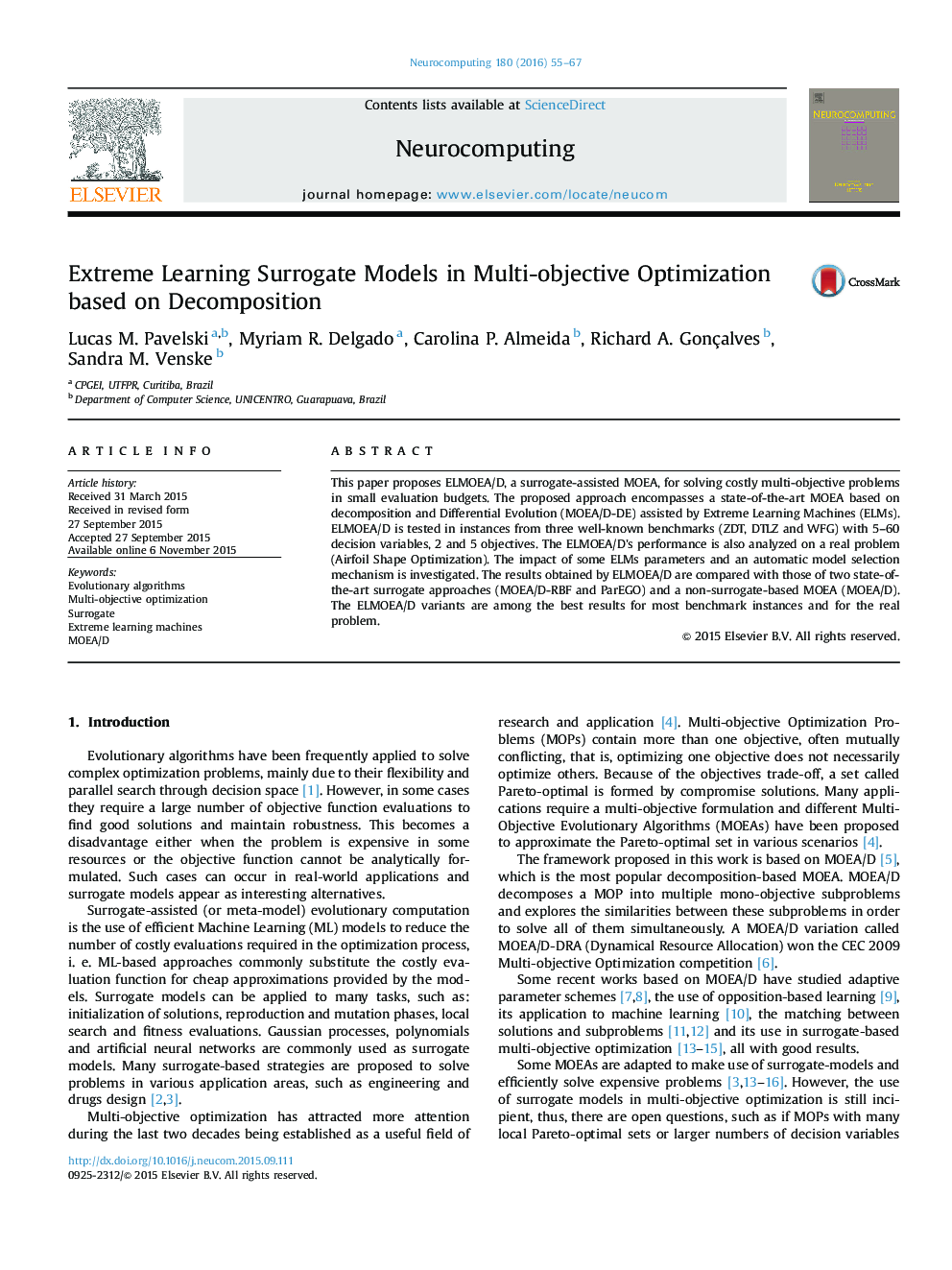| Article ID | Journal | Published Year | Pages | File Type |
|---|---|---|---|---|
| 408629 | Neurocomputing | 2016 | 13 Pages |
•The problem of solving expensive MOPs with small evaluation budgets is treated.•The paper investigates the use of ELM as a surrogate model in MOEAs.•A procedure is used to automatically select ELM parameters.•The scalability of surrogates concerning the total of decision variables and number of objectives is evaluated.•Experimental results show the good performance of ELMOEA/D in different problems.
This paper proposes ELMOEA/D, a surrogate-assisted MOEA, for solving costly multi-objective problems in small evaluation budgets. The proposed approach encompasses a state-of-the-art MOEA based on decomposition and Differential Evolution (MOEA/D-DE) assisted by Extreme Learning Machines (ELMs). ELMOEA/D is tested in instances from three well-known benchmarks (ZDT, DTLZ and WFG) with 5–60 decision variables, 2 and 5 objectives. The ELMOEA/D׳s performance is also analyzed on a real problem (Airfoil Shape Optimization). The impact of some ELMs parameters and an automatic model selection mechanism is investigated. The results obtained by ELMOEA/D are compared with those of two state-of-the-art surrogate approaches (MOEA/D-RBF and ParEGO) and a non-surrogate-based MOEA (MOEA/D). The ELMOEA/D variants are among the best results for most benchmark instances and for the real problem.
